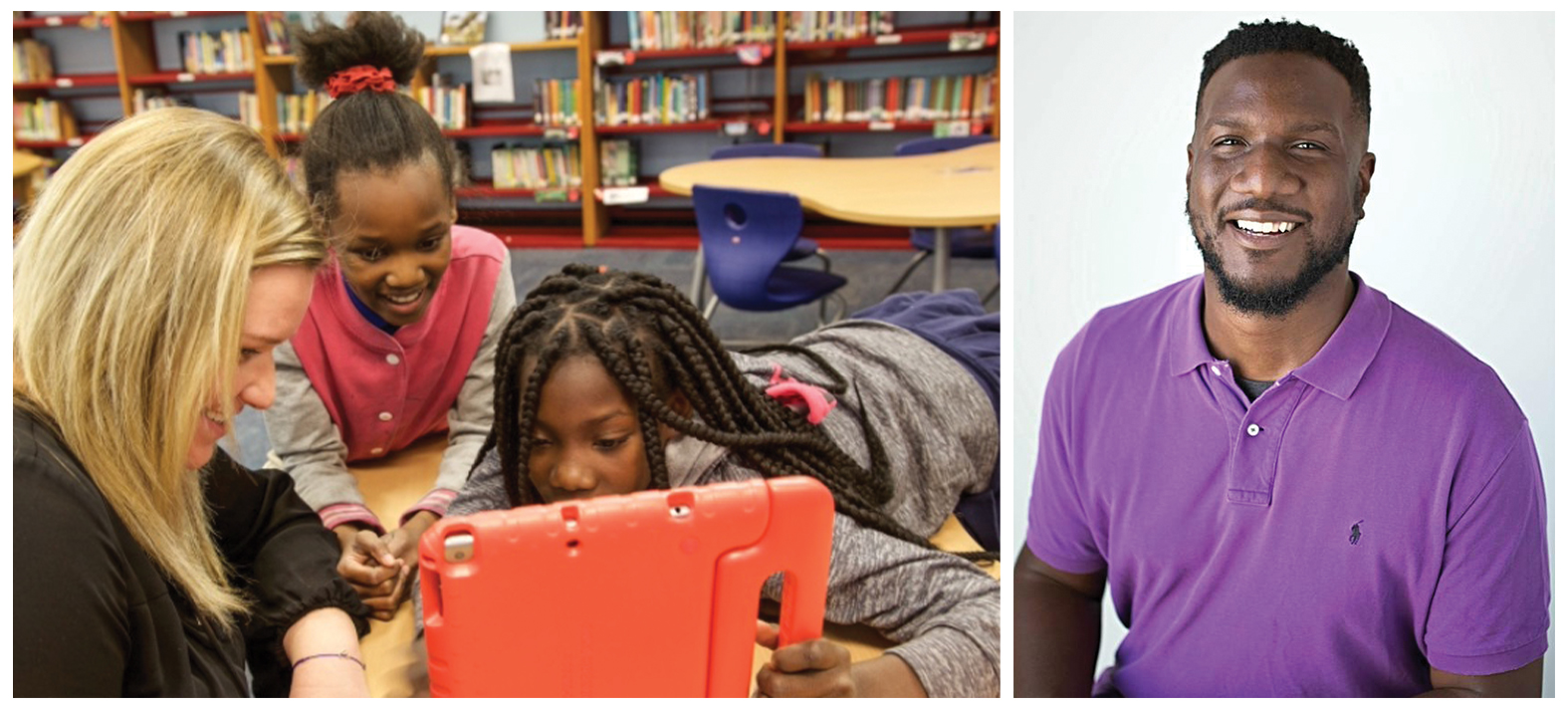The nonprofit sparks students’ curiosity and teaches real-world skills in the media arts

Angel Oak Elementary students take photos with their tablets at Night Heron Park on Kiawah Island in November 2019.
Just weeks after taking over as Yo Art’s new executive director, Greg Colleton had to get more creative than he ever expected about teaching digital media to students.
The first test: how to get back in front of them again after the pandemic sent students home to learn remotely. “We had to figure out how we were going to survive, how we were going to evolve while the world was changing. We don’t have an office, we work solely within the classroom, and the classrooms were closed. That was the biggest challenge: how we were going to transform our everyday operation to a virtual platform.”
It was a test that Yo Art was uniquely positioned to pass. The nonprofit was created in 2007 by Gene Furchgott at the request of then-Mayor Joe Riley to bridge the digital divide for at-risk students by providing them with hands-on lessons in media arts. The pilot program began teaching photography, graphic design, and web design to approximately 35 students. In the past 14 years, it has grown to reach up to 2,000 elementary through high school students and expanded to include other creative yet technical skills such as landscape architecture, coding, fashion, and filmmaking.
In previous years, Yo Art led 10-week projects selected by teachers. The nonprofit provided equipment, such as cameras and tablets, and recruited artists and design professionals to help teach students tech skills in Title 1 schools. “I can’t say enough about the importance of getting these devices in areas that would not normally have accessibility,” Colleton says. “They can become comfortable with the equipment, and then develop careers already knowing how to use it.”

(Left to right) Yo Art students learn fashion design at Jerry Zucker Middle School; Greg Colleton became Yo Art’s executive director in April 2020.
When the pandemic took classroom demonstrations off the table, the nonprofit partnered with Metanoia Youth Leadership Academy to create a virtual after-school program offering coding, fashion design, and digital photography. Soon, more school administrators grew comfortable with the new virtual platforms, allowing Yo Art to help teach online lessons during school hours. As students already had school-issued tablets, they could hone the skills they’d learned in their free time.
Last spring, Yo Art introduced elementary school students in the Metanoia program to African American artist Romare Bearden, known for his abstract collages and who will be featured at the Gibbes Museum of Art this fall. The students were asked to photograph things that made them happy and create a mixed-media collage inspired by Bearden’s work. Yo Art mailed them art kits including feathers, cotton balls, paint, and glitter during spring break. “They told us they were so happy to see the art kits show up at their houses, so they could create and have something tangible,” Colleton says. “They were more engaged with their families and interacting while learning. It was a great moment to connect with them.”
As Colleton prepares to return to classrooms, he envisions expanding the Yo Arts programming to offer career counseling for high school students and create a mentorship program. Even if the students don’t pursue careers in digital arts, the exposure “sparks that curiosity and that interest” that leads to lifelong desire to learn and find creative solutions.